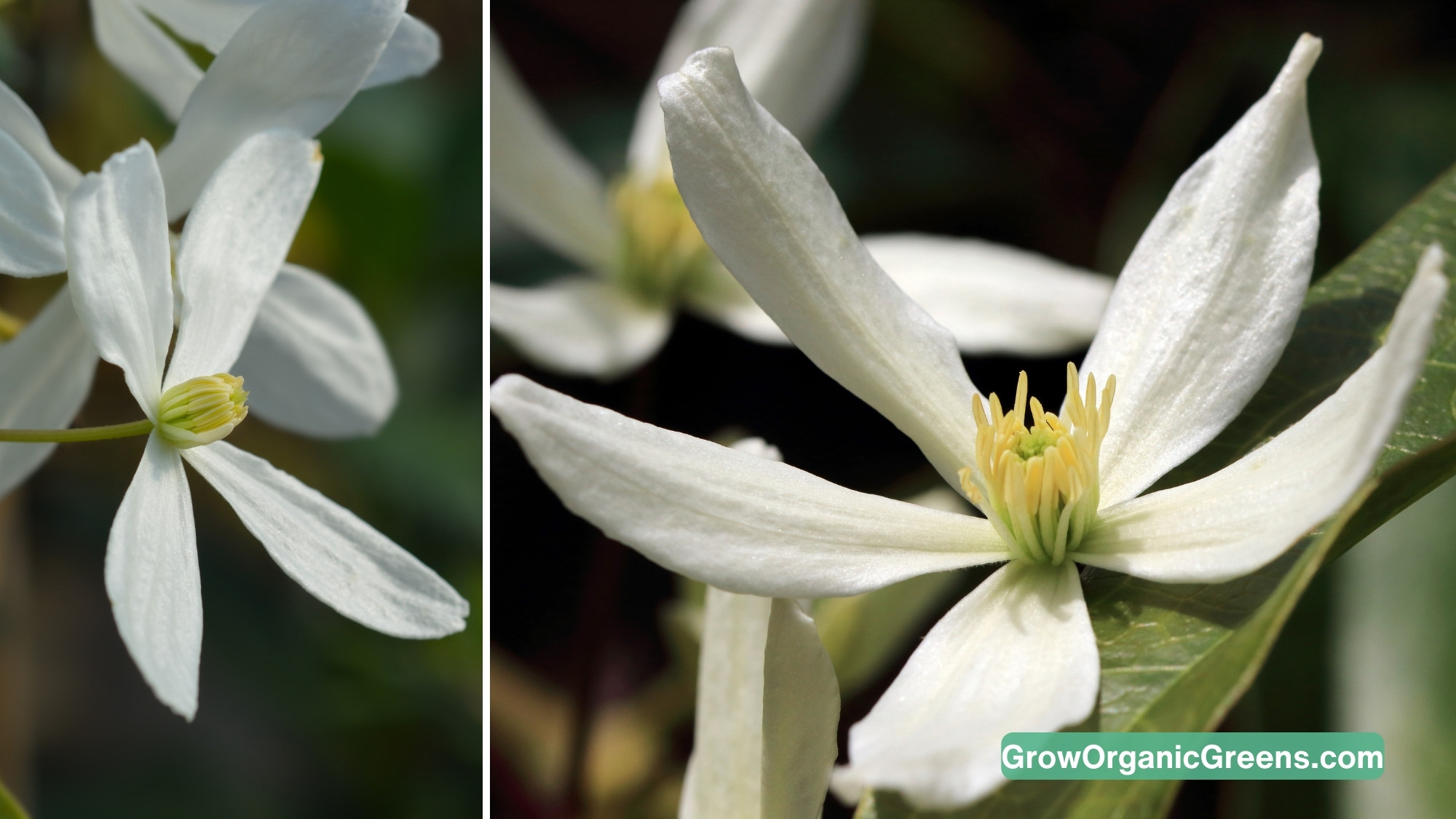Looking to add a touch of year-round beauty and elegance to your garden?
The Evergreen Clematis (Clematis armandii) might be the perfect choice. This perennial climber not only provides stunning blooms but also offers lush, evergreen foliage that can enhance any garden setting.
In this article, you’ll learn how to grow and care for Evergreen Clematis, ensuring it thrives in your garden.
How Does It Look?
The Evergreen Clematis is renowned for its fragrant, star-shaped flowers with creamy white petals.
Each flower consists of five to seven petals, measuring up to 2-3 inches in diameter.
The buds are slender and elongated, gradually opening into aromatic white blooms.
The leaves are dark green, lanceolate, and glossy, providing attractive year-round foliage.
Native
Evergreen Clematis is native to China.
Hardiness Zones
7-9 (USDA)
Annual/Biennial/Perennial
Evergreen Clematis is a perennial plant, meaning it will return year after year with proper care.
Requirement at the Time of Plantation
To plant Evergreen Clematis, follow these guidelines:
Soil: Use well-draining soil with a neutral to slightly alkaline pH.
Depth: Plant the root ball about 2-3 inches below the soil surface to protect the roots.
Spacing: Space plants about 3-4 feet apart to allow for adequate growth.
Support: Provide a trellis, arbor, or other support structure for climbing.
Blooming Season
Evergreen Clematis typically blooms from late winter to early spring.
How to Take Care
To ensure your Evergreen Clematis thrives, follow these care instructions:
Sunlight Requirement: Prefers full sun to partial shade. It needs at least 6 hours of sunlight per day for optimal blooming.
Water Requirement: Requires regular watering, especially during dry periods. Ensure consistent moisture but avoid waterlogging. Deep watering is recommended to encourage deep root growth.
Fertilizer: Apply a balanced, slow-release fertilizer in the spring as new growth begins.
Mulching: Use organic mulch like bark chips or compost to retain soil moisture, regulate temperature, and suppress weeds. Keep the mulch a few inches away from the base of the plant to prevent rot.
Companion Planting: Suitable companions include shrubs and other climbing plants that share similar soil and sunlight requirements.
Uses
Evergreen Clematis is primarily used for ornamental purposes, enhancing garden beauty with its evergreen foliage and early blooms. It is ideal for covering trellises, arbors, and fences. There are no widely recognized medicinal or culinary uses for this specific variety.
How to Propagate
Propagate Evergreen Clematis by taking cuttings or layering in early spring or late summer. Ensure the cuttings have at least one pair of leaves and a section of stem to encourage root growth.
Problems and Organic Solutions
Common pests include aphids and spider mites. Use insecticidal soap or neem oil to control these pests organically. Fungal diseases like powdery mildew can be managed by ensuring good air circulation and avoiding overhead watering.
Special Facts
While the Evergreen Clematis doesn’t have specific associations with luck or feng-shui, its stunning blooms and evergreen foliage make it a prized addition to any garden.
Key Facts for Growing Evergreen Clematis
| Category | Details |
| Appearance | Fragrant, star-shaped flowers with creamy white petals, 2-3 inches in diameter. Slender, elongated buds. Dark green, lanceolate, glossy, evergreen leaves. |
| Native | Native to China. |
| Hardiness Zones | 7-9 (USDA) |
| Perennial | Yes, it returns year after year with proper care. |
| Plantation Requirements | Well-draining soil with neutral to slightly alkaline pH. Plant root ball 2-3 inches below soil surface. Space plants 3-4 feet apart. Provide trellis, arbor, or support structure. |
| Blooming Season | Late winter to early spring. |
| Care Instructions | Sunlight: Full sun to partial shade, at least 6 hours of sunlight per day. Water: Regular watering, consistent moisture, avoid waterlogging. Fertilizer: Balanced, slow-release fertilizer in spring. Mulching: Organic mulch like bark chips or compost; keep mulch a few inches from plant base. Companion Planting: Suitable with shrubs and other climbing plants. |
| Uses | Primarily ornamental for trellises, arbors, fences. No medicinal or culinary uses. |
| Propagation | Take cuttings or layer in early spring or late summer; ensure cuttings have at least one pair of leaves and a section of stem. |
| Problems and Solutions | Pests: Aphids and spider mites; use insecticidal soap or neem oil. Diseases: Powdery mildew; ensure good air circulation, avoid overhead watering. |
| Special Facts | No specific associations with luck or feng-shui, but known for stunning blooms and evergreen foliage. |
Final takeaway!
The Evergreen Clematis is a beautiful and versatile plant that can add year-round charm to your garden. With the right care, it will reward you with an abundance of fragrant, star-shaped flowers and lush, glossy foliage. Ready to transform your garden? Plant the Evergreen Clematis today and enjoy its elegance for years to come. Happy gardening!

Misty S is the founder and lead writer at GrowOrganicGreens.com, a comprehensive gardening resource dedicated to helping people cultivate beautiful and sustainable gardens. She has a Master’s degree in Economics and specialized studies in agricultural economics, horticulture, and soil science. Drawing from her extensive knowledge and experience, Misty shares practical gardening tips on soil preparation, organic manure composting, fertilizers, plant care, and indoor gardening, making her advice accessible and helpful to gardeners of all levels.
Despite having an high-demanding 9-5 job, Misty dedicates her personal time to researching and exploring various gardening topics. Her keen interest in gardening has grown into a passion, driving her to help new gardeners and anyone interested in starting their gardening journey.
Follow Misty’s work and the latest gardening insights and updates on Pinterest. You can reach out to Misty at mistysblogging@gmail.com.

